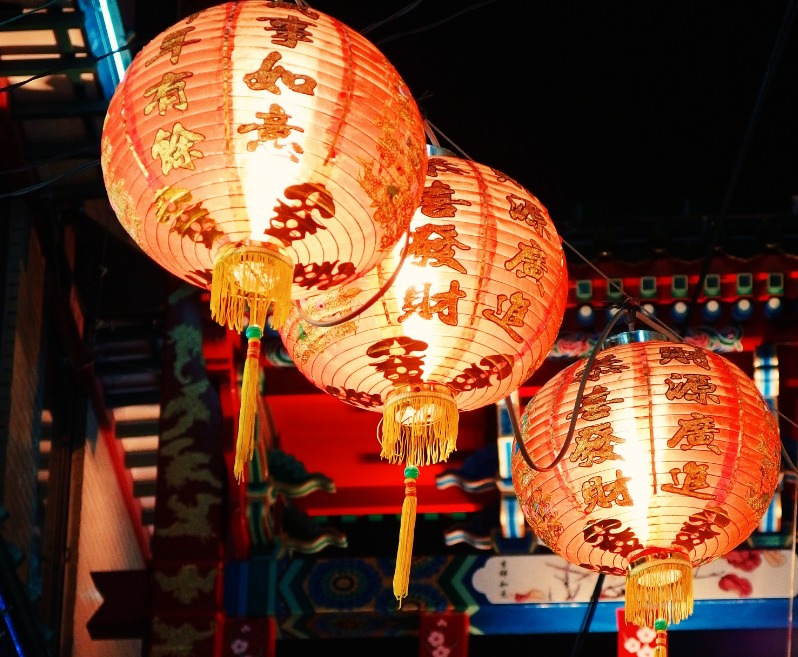Basic Principles of Feng Shui

Feng shui is founded on a number of basic principles about energy in the universe and how that energy flows. To implement the theories of feng shui, it helps to understand the following core principles.
Chi
Chi (pronounced chee), also spelled ch’i or qi, is a Chinese word used to describe the invisible, vital energy of the universe that animates and flows among all living things.
Practitioners of feng shui believe that the way chi flows in your environment affects everything from your health to your attitude. The purpose of feng shui is to encourage the chi around you to flow in a way that benefits you.
Good Chi vs. Bad Chi
Chi takes on the characteristics of the space in which it’s located. It can be broadly described as either good or bad.
- Good chi: Chi is good when it flows gently and slowly and when the space or location it occupies is clean, bright, well kept, and full of life. Good chi brings with it joy, luck, and prosperity.
- Bad chi: Chi is bad—bringing with it bad luck and financial difficulty—when it either stagnates or moves so quickly that it is overwhelming or immediately swept away. Bad chi tends to appear in spaces that are dark, dank, dirty, or unkempt; where there is death or rot; or in long, narrow spaces. Bad chi can also be generated by sharp or angled objects. These objects reflect and amplify chi, creating what is known as shar, poison arrows, or cutting chi.
In addition, it’s important to recognize that chi that’s good in one room is not always good in another room. For instance, the chi in the bedroom should promote serenity and calm, whereas the chi in a home office should promote work and industry. The guidelines of feng shui will help you to ensure that good chi circulates in a harmonious way through your home and that the chi in each room is appropriate to the specific purpose of that room.
Yin and Yang
Yin and yang are two concepts that together represent feng shui’s principle of opposites. This principle states that all chi is produced by the balance and interaction between opposing yet complementary forces, such as wet and dry or black and white. Yin energy is receptive or passive energy, whereas yang energy is active. The following table lists the opposing qualities most often associated with yin and yang:
|
Yin
|
Yang
|
|
|
Earth
|
Heaven
|
|
|
Passive
|
Active
|
|
|
Female
|
Male
|
|
|
Cold
|
Hot
|
|
|
Dark
|
Light
|
|
|
Wet
|
Dry
|
|
|
Inward
|
Outward
|
|
|
Black
|
White
|
Yin and yang are commonly symbolized as two teardrops intertwined to form a perfect circle called the taiji, which represents harmony and balance.
The eye-like dots symbolize the ability to change—within yin is yang, within yang is yin, and each can become the other. Yin and yang simultaneously oppose and complement each other; each is necessary to balance the other. Part of feng shui in the home is to design your spaces in a way that promotes this balance, including aspects of both yin and yang. For instance, a dark, cool room is too yin; it could be balanced with yang by adding brighter lights or painting it a lighter color.
The Five Elements
The five elements in feng shui are earth, fire, metal, water, and wood. Each element is associated with a particular type of chi that’s either in harmony with or in opposition to the chi in the other elements. The interaction of the chi among the elements in a space determines the balance of chi in that room or location.
The Elemental Cycles
According to feng shui, there are two primary cycles that demonstrate how the five elements interact: the productive cycle and the destructive cycle.
The Productive Cycle
The productive cycle, also called the birth cycle or creative cycle, illustrates how the five elements nurture and support one another when they’re in balance:
- Wood burns and produces fire.
- Fire turns into ashes, which produce earth.
- Earth spins and produces metal.
- Metal contracts and produces water.
- Water creates wood with its nourishment.
The Destructive Cycle
The destructive cycle illustrates how the five elements can destroy one another and disrupt chi when out of balance:
- Metal cuts wood.
- Wood penetrates earth (as roots penetrate soil).
- Earth absorbs and blocks water.
- Water puts out fire.
- Fire melts metal.
Associations of the Five Elements
Each of the five elements is associated with several other traits, including personal attributes and shapes.
|
Element
|
Attributes
|
Shape
|
||
|
Earth
|
Stability, balance
|
Square, flat
|
||
|
Fire
|
Expansion, action
|
Triangular, pointed
|
||
|
Metal
|
Contraction, focus
|
Round
|
||
|
Water
|
Stillness, concentration
|
Curved, wavy
|
||
|
Wood
|
Growth, creativity
|
Rectangular, vertical
|
These associations are important because they can help you to observe a location, such as a room or other space, and determine whether the elements within it are well balanced. For instance, a bathroom full of pointed fixtures would not be in balance, as bathrooms contain water and pointed shapes are associated with fire, not water.
The Eight Trigrams
Feng shui illustrates possible interactions between yin and yang through symbols called the eight trigrams, also known as the octagon or bagua. A trigram consists of three horizontal lines that can be either solid or broken:
- A solid line represents yang.
- A broken line represents yin.
The Later Heaven Sequence
The eight trigrams are often depicted in a diagram called the later heaven sequence. This diagram:
- Illustrates the eight trigrams in perfect balance at the eight poles of the compass
- Associates each trigram with its name, an element, a family position, a color, a body part or parts, a number, and a direction
Note that the Chinese compass puts south at the top, with east to the left, west to the right, and north at the bottom.
Life Areas
Each of the eight trigrams is also associated with one of eight life areas:
- Fame and reputation
- Marriage and partnership
- Children
- Helpful people
- Career
- Knowledge
- Family
- Wealth
The octagon formed by the eight trigrams in the later heaven sequence can then be used as a map to divide your home according to the life areas.
Focusing on circulating good chi to the part of the home that corresponds with a specific life area can promote the flow of good chi and bring you luck in that aspect of life. Feng shui teaches that when all of the life areas are receiving chi, you will enjoy good health.
Gua Numbers
Gua numbers, or kua numbers, are associated with the five elements and the eight directions of the later heaven sequence. By knowing your gua number, you can determine your most auspicious directions, colors, and elements and make sure to incorporate these into your life. Gua numbers are also used to determine which direction the head of your bed should face (see Feng Shui for the Bedroom).
How to Calculate Your Gua Number
Your gua number is based on the year of your birth on the Chinese calendar. If you were born in January or February, check the date of the lunar Chinese New Year for the year of your birth. If you were born before the Chinese New Year fell in that year, deduct 1 from your year of birth.
- Add up the digits of the year you were born. If you were born in 1983, for instance, you would add 1 + 9 + 8 + 3 and get 21.
- Add the digits of that number together to get a single digit. In this case (21), you would add 2 + 1 = 3.
- If the resulting number is 10 or greater, add the digits together again until you’re left with a single digit.
- The next step depends on whether you are a man or woman.
- Women: Once you have a single digit, add four to it (3 + 4 = 7).
- Men: Subtract your single digit from 11 (11 – 3 = 8).
- If that number has two digits, add them together.
The resulting number is your gua number.


